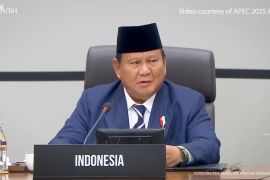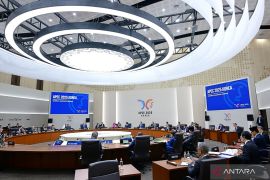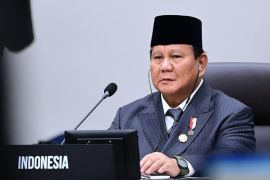Senior officials from the 21 APEC economies have commenced policy deliberations in Port Moresby to continue to build common ground towards advancing regional economic integration and connectivity, digital entrepreneurship, and market access for businesses of all sizes.
The APEC senior officials meetings on Nov 12-13 will be followed by the APEC Ministerial Meeting on Thursday and culminate with a meeting of APEC Leaders on Saturday (Nov 17) and Sunday (Nov 18), chaired by Prime Minister O`Neill.
"This has been a long road for a small economy like ours. Policy discussions are going well. I look forward to receiving them with the leaders over the next few days," Prime Minister O`Neill remarked at the APEC senior officials meeting.
This week`s meetings aim to provide greater policy direction in APEC for delivering trade that harnesses new, technologically-driven growth drivers, sparks business innovation and employment, and offers a better quality of life to people in all areas of the region.
Under the theme of "Harnessing Inclusive Opportunities, Embracing the Digital Future," APEC officials come together at a time of global economic uncertainty. The APEC region accounts for half of the global trade and 60 percent of the world`s gross domestic product.
"We meet during a very crucial period, both globally and regionally, amidst economic uncertainty and other challenges that threaten the economic prosperity and integration and stability of our region," Ambassador Ivan Pomaleu, 2018 Chair of the APEC Senior Officials Meeting, stated.
"While this uncertainty, on the face of it, may appear to some to suggest disunity or disharmony, in my view, it demonstrates to us the heightened need for us here today to stand in solidarity and be more strategic in how we respond to these challenges and identify and harness the opportunities in a productive and inclusive manner where all economies can benefit," he remarked.
An APEC report tabled at the meeting highlights the need for increased investment in infrastructure throughout the region, especially in the transport (road and rail), energy, and telecommunications sectors.
Quality infrastructure investment supported economic growth, in terms of improving productivity, speeding up the flow of goods and people and thereby trade, and improving the delivery of health, sanitation, and other essential services. It also supported inclusive growth by helping to reduce poverty and connecting remote regions.
Many economies are undertaking a structural reform of their policies to ensure ongoing sound infrastructure development, including changes to legal frameworks and government procurement practices to facilitate private sector investment.
Other reforms underway include deregulating network industries, adapting regulatory systems in light of technological change, and reforming institutions, such as state-owned enterprises and infrastructure funding models.
APEC economies will collectively need to spend US$1.7 trillion per year during the 2020-2025 period, rising to more than $2 trillion per year during the 2030-2035 period, to meet infrastructure needs, according to the 2018 APEC Economic Policy Report.
The increased spending arises from population growth, aging populations, transport and connectivity needs, the rise of digital infrastructure, and the need to ensure crisis-ready infrastructure and to renew aging infrastructure.
Editing by Bustanuddin
Reporter: Yuni Arisandy Sinaga
Editor: Fardah Assegaf
Copyright © ANTARA 2018











